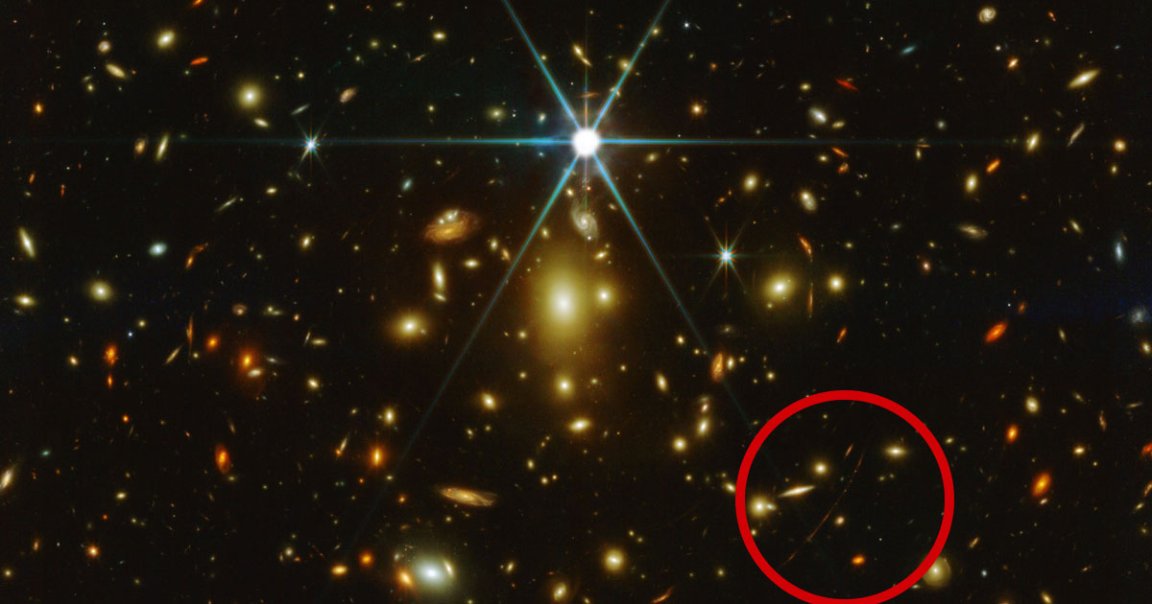
Better Off Alone
The James Webb Space Telescope has once again captured imagery of the furthest star ever detected — and revealed that it may not be alone.
In a press release, NASA noted that the Webb has revealed in even greater detail than ever, the incredible, ancient star Earendel, which was discovered via the Hubble Space Telescope last year and named after a minor character from the “Lord of the Rings” universe.
In doing so, they made yet another intriguing discovery: that the far-flung star, which is believed to have been born within the first billion years after the Big Bang, may well have a companion.
More than twice as hot as our Sun and a whopping million times brighter, Earendel — which means “morning star” in Old English — is so hot that it’s actually blue. In its latest measurements, however, Webb detected something odd: an unexpected peak in its wavelengths that could indicate that it has a cooler red star hanging out alongside it.
As NASA Goddard’s Brian Welch told New Scientist, it makes a lot more sense for the uber-hot star to be part of a binary pair with a cooler star. Astronomers weren’t expecting to find evidence of Earendel’s companion so soon — but as the Space Telescope Science Institution in Baltimore notes, the latest imagery seems to indicate exactly that.
“Most massive stars that we know of have a companion, so we expected to see some evidence of that for Earendel,” Welch told NS. “But it is more common for one star to be much fainter than the other, so we expected to have to dig a bit more to find evidence of a companion.”
Warped Outlook
Located in a galaxy far, far away — the Sunrise Arc, to be exact, some 12.9 billion light-years away — the discovery of Earendel itself was also unprecedented because of how Hubble and Webb were able to “see” it.
“Both Hubble and Webb were able to detect Earendel due to its lucky alignment behind a wrinkle in space-time created [a] massive galaxy cluster,” NASA noted in its latest press release about the tar. “The galaxy cluster, located between us and Earendel, is so massive that it warps the fabric of space itself, which produces a magnifying effect, allowing astronomers to look through the cluster like a magnifying glass.”
However you look at it, Earendel is incredible — and it clearly contains even more mysteries than meets the eye.
More on Webb mysteries: James Webb Telescope Spots Giant Question Mark in Space